40 Adromischus Varieties to Captivate Your Senses
Adromischus, the thick-stemmed succulents from southern Africa, are true gems adorning any collection. With their vibrant, patterned leaves that display a kaleidoscope of colors in sunlight, and their unique, sculptural forms as they mature, these fascinating plants offer endless visual delight. Keep reading to explore the amazing diversity within this captivating genus.
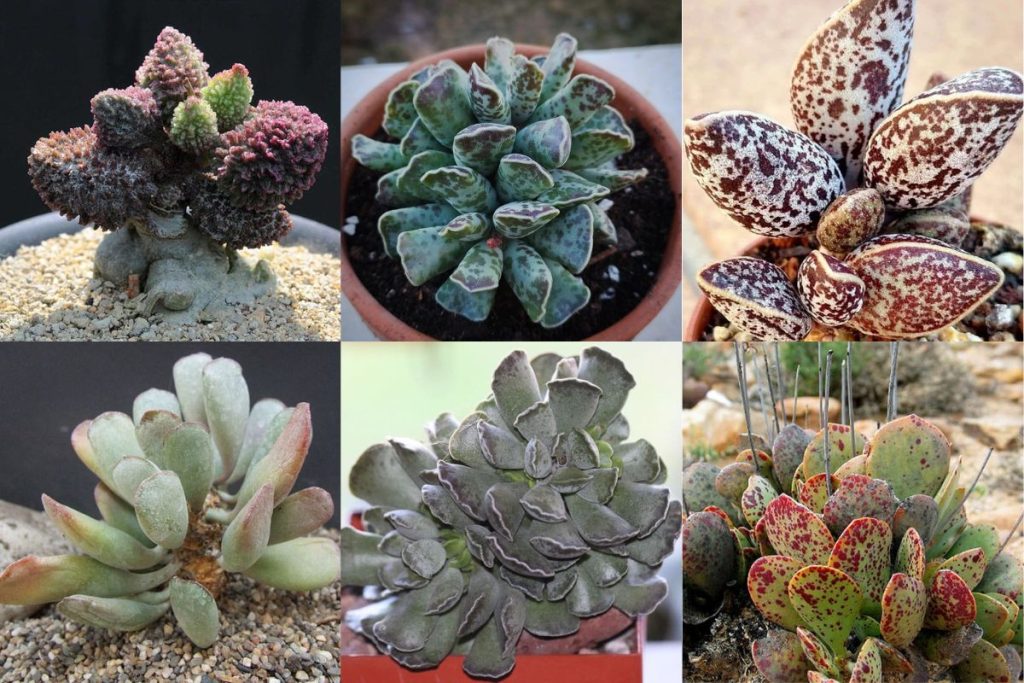
Related Post:
1,000 Types of Succulents With Pictures.
Contents
- 1 Types of Adromischus Succulents
- 1.1 Adromischus alstonii
- 1.2 Adromischus caryophyllaceus
- 1.3 Adromischus cooperi
- 1.4 Adromischus cristatus
- 1.5 Adromischus cristatus var. clavifolius
- 1.6 Adromischus cristatus var. schonlandii
- 1.7 Adromischus diabolicus
- 1.8 Adromischus fallax
- 1.9 Adromischus festivus
- 1.10 Adromischus filicaulis
- 1.11 Adromischus hemisphaericus
- 1.12 Adromischus humilis
- 1.13 Adromischus inamoenus
- 1.14 Adromischus leucophyllus
- 1.15 Adromischus liebenbergii
- 1.16 Adromischus maculatus
- 1.17 Adromischus mammillaris
- 1.18 Adromischus marianae
- 1.19 Adromischus marianae ‘Blosianus’
- 1.20 Adromischus marianae f. alveolatus
- 1.21 Adromischus marianae f. herrei
- 1.22 Adromischus marianae ‘Little Spheroid’
- 1.23 Adromischus marianae var. antidorcatum
- 1.24 Adromischus marianae var. hallii
- 1.25 Adromischus marianae var. immaculatus
- 1.26 Adromischus marianiae var. kubusanum
- 1.27 Adromischus maximus
- 1.28 Adromischus nanus
- 1.29 Adromischus roaneanus
- 1.30 Adromischus schuldtianus
- 1.31 Adromischus schuldtianus ssp. juttae
- 1.32 Adromischus sphenophyllus
- 1.33 Adromischus subdistichus
- 1.34 Adromischus subviridis
- 1.35 Adromischus triflorus
- 1.36 Adromischus trigynus (Calico Hearts)
- 1.37 Adromischus umbraticola
- 2 Caring for Adromischus Species
Types of Adromischus Succulents
These quirky little succulents from southern Africa are real showstoppers! With their thick, chunky stems and vibrant, patterned leaves, Adromischus plants are like miniature living sculptures. Let’s explore the amazing variety found in Adromischus types.
Adromischus alstonii
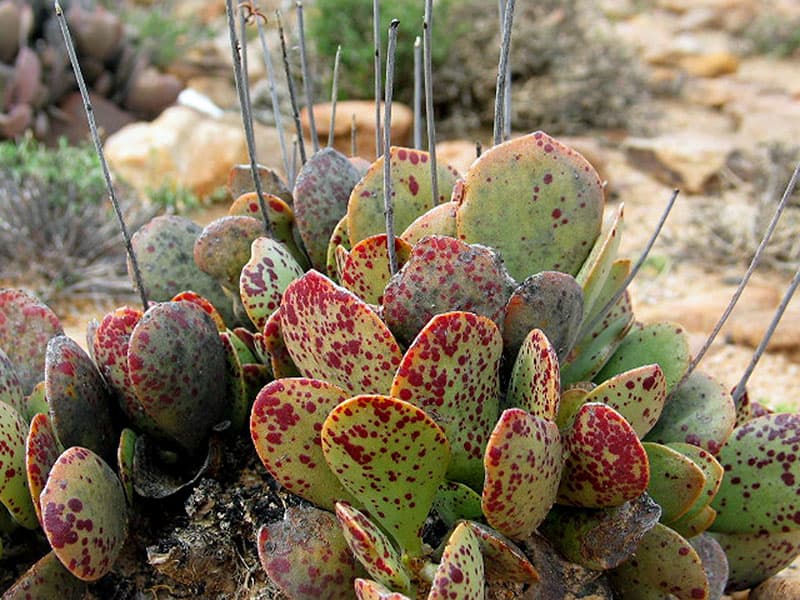
Imagine a succulent with pale green leaves topped with a cute little spike! That’s Adromischus alstonii. Its stems can grow up to 20 inches tall, with clusters of tiny greenish-brown flowers.
Adromischus caryophyllaceus
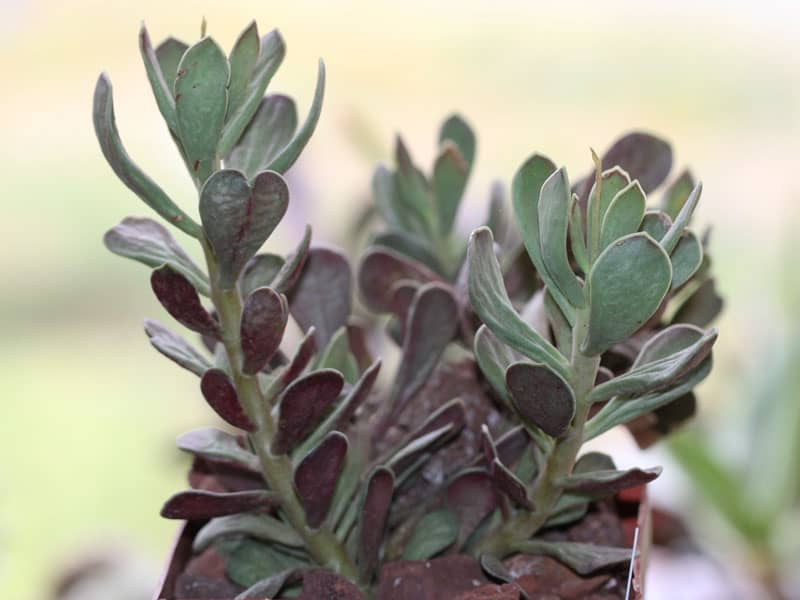
This multi-stemmed beauty grows up to 14 inches high when flowering. Its blue-green or gray-green leaves can reach 3 inches long, often with maroon edges. But the real stars are the bright pink tubular flowers with purple stripes down the petals!
Adromischus cooperi
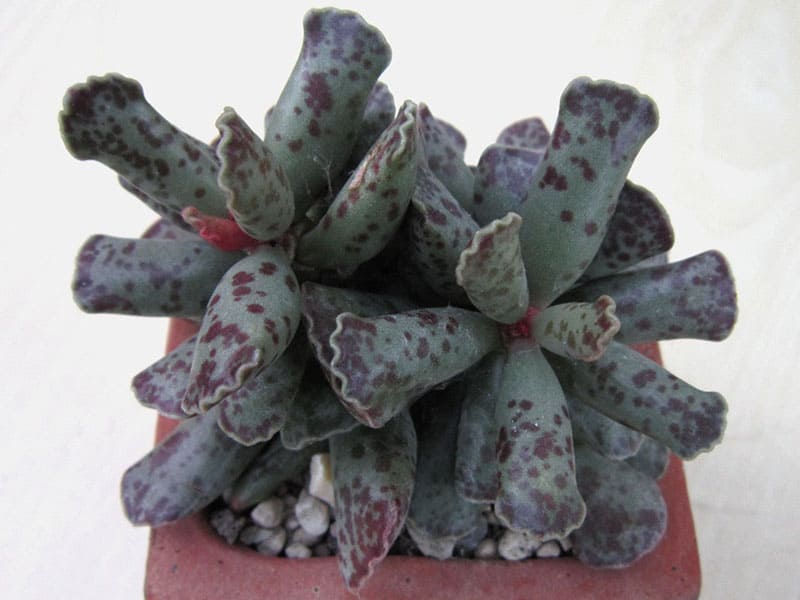
At just 2-7 inches tall, Adromischus cooperi is a dwarf delight! Its plump silver-gray leaves are elegantly speckled with rich purple. Reddish-green flowers appear on 14-inch stems.
Adromischus cristatus
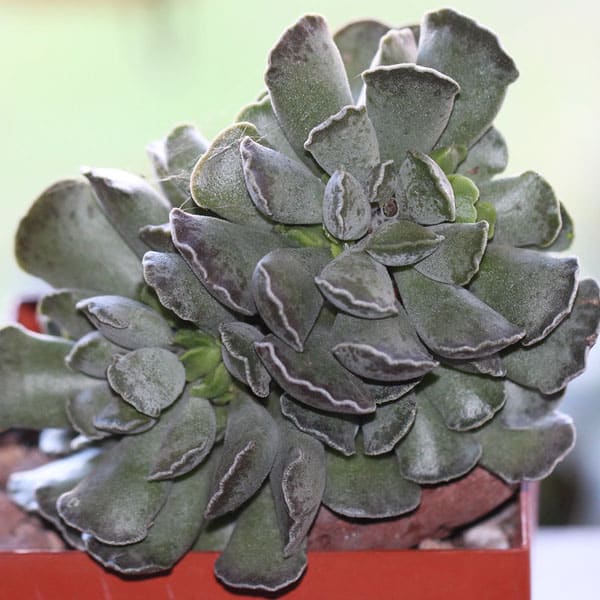
Prepare to be amazed by the crested, wavy leaves of this exquisite miniature succulent. Growing in tight rosettes, the chubby reverse-triangle leaves have a velvety texture and often develop crinkly, darker edges. Thick mats of reddish hair-like roots add to the alien appeal!
Adromischus cristatus var. clavifolius
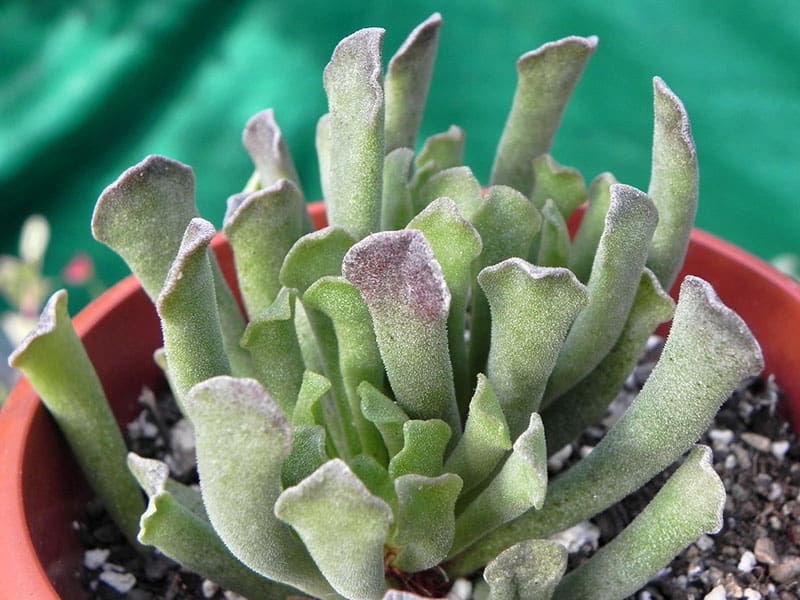
Prepare to be charmed by the adorable “Pretty Pebbles” variety! Clavifolius forms tight clusters of chubby, club-shaped silver-green leaves that resemble, well, pretty pebbles. The fleshy leaves sprout from short stems wrapped in a coat of reddish, wiry hair-like roots.
This miniature succulent stays super compact, making it ideal for dish gardens or windowsill displays where you can fully appreciate its unique texture and shape. Like its crested cousin A. cristatus, clavifolius puts out tall stems of small grayish-green flowers when mature. But let’s be honest – you’ll grow this one mostly for its irresistibly plump, pebble-like leaves!
Adromischus cristatus var. schonlandii
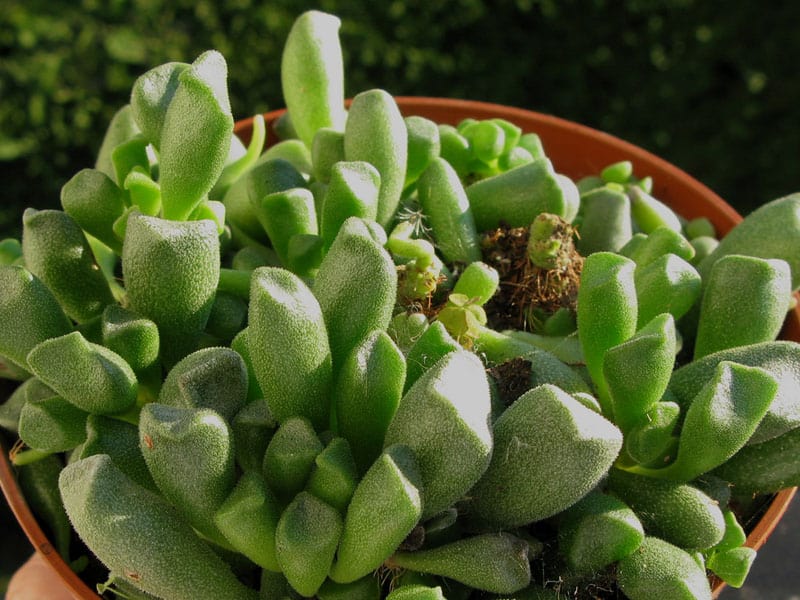
This dwarf relative of the classic crested Adromischus is a bit more petite. Its wavy leaf margins are narrower than the leaf width, giving it a slightly more delicate appearance. Tiny glandular hairs also coat the inflorescence and flowers.
Adromischus cristatus var. zeyheri
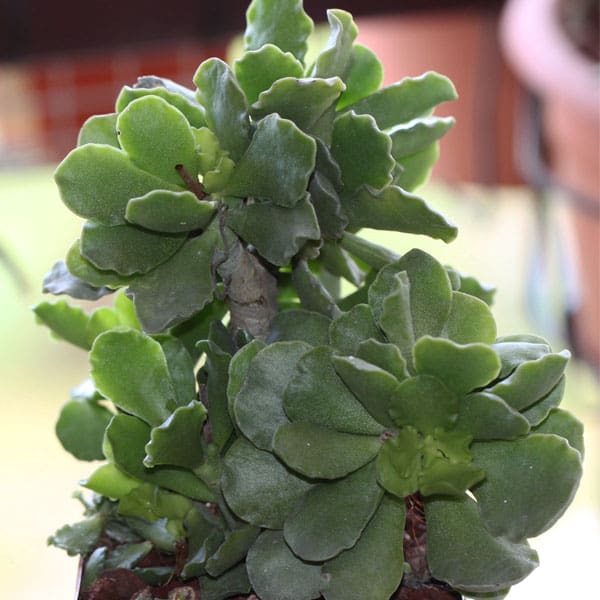
The zeyheri variety stands out with its complete lack of wiry aerial roots. Instead, the light green, glossy leaves sprout straight from the stems. The flattened, widely triangular leaves get huge – up to 4 inches long! Reddish glandular hairs cover the tall flower spikes.
Adromischus diabolicus
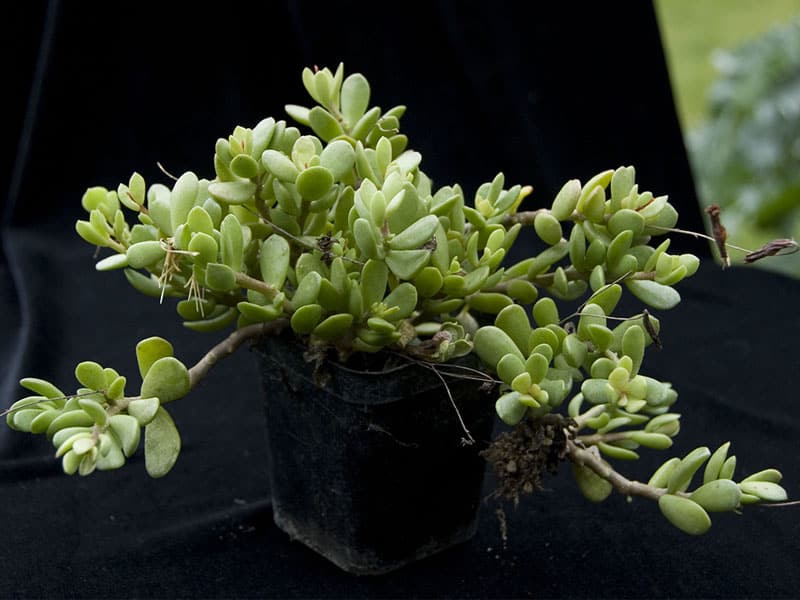
Don’t let the devilish name fool you – this variety is simply divine! Diabolicus forms compact rosettes of plump, triangular leaves covered in velvety hairs. The grayish-green leaves often blush red when exposed to bright light.
Adromischus fallax
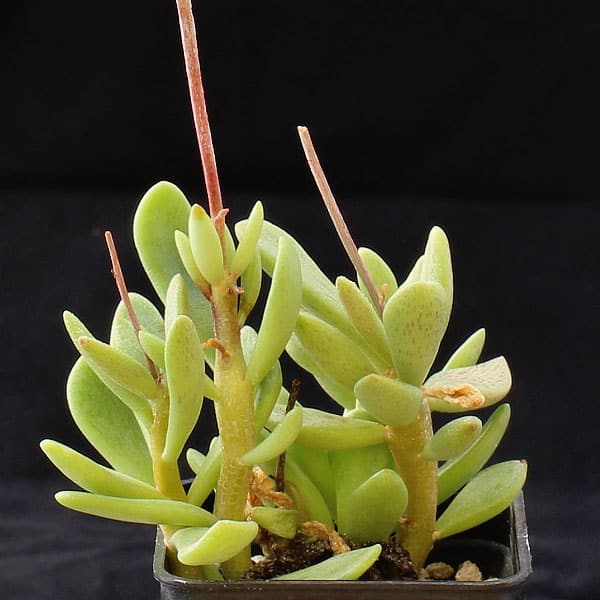
With its trailing blue-green branches up to 8 inches long, fallax makes a great hanging basket plant. The fleshy, paddle-shaped leaves are speckled with pretty purple spots. In late winter, whitish tubular flowers tinged with red appear.
Adromischus festivus
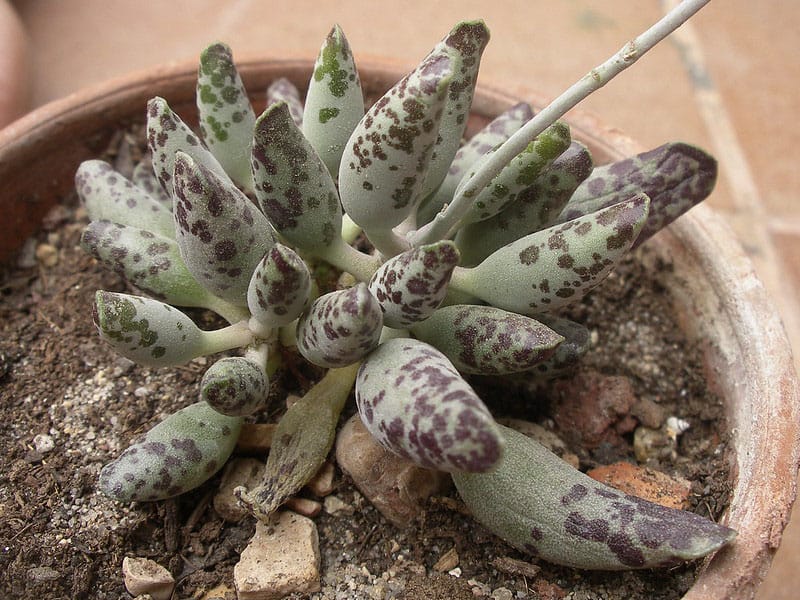
As it matures, this little guy develops an extra-thick, swollen base or caudex. The short stems are topped with chubby, semi-cylindrical leaves that can be plain green or marbled with red depending on sunlight exposure.
Adromischus filicaulis
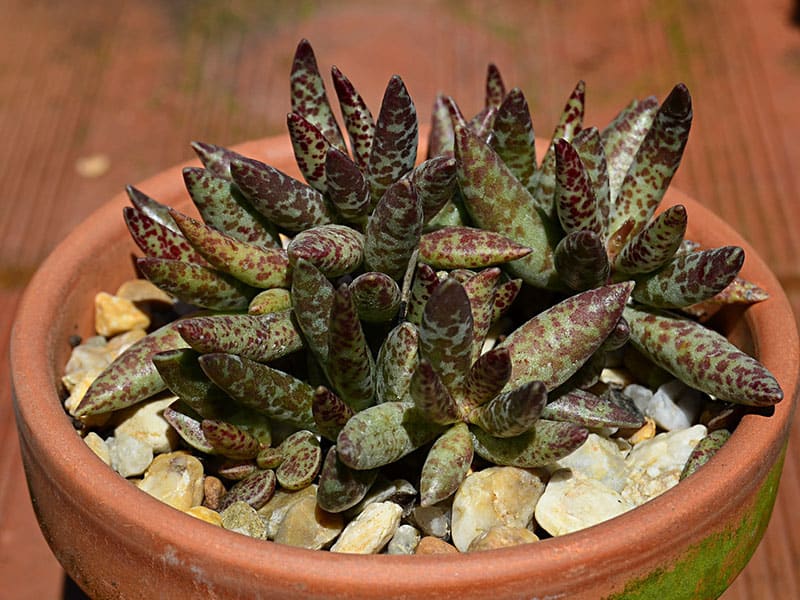
Talk about varied looks! This slow-grower can have shiny gray-green leaves, or reddish-brown ones with rust-colored spots and margins. Some varieties sprout stiff little “stilts” too.
Adromischus hemisphaericus
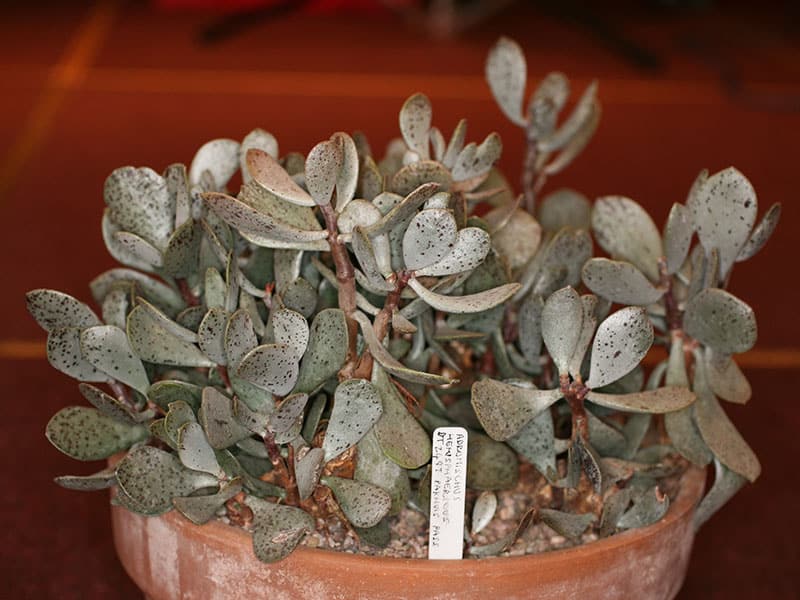
Reaching up to 10 inches tall, hemisphaericus has thick, blue-gray leaves up to 3 inches long. The flaking white bloom gives them an frosted appearance. Dainty pink flowers with green tubes appear on tall stems.
Adromischus humilis
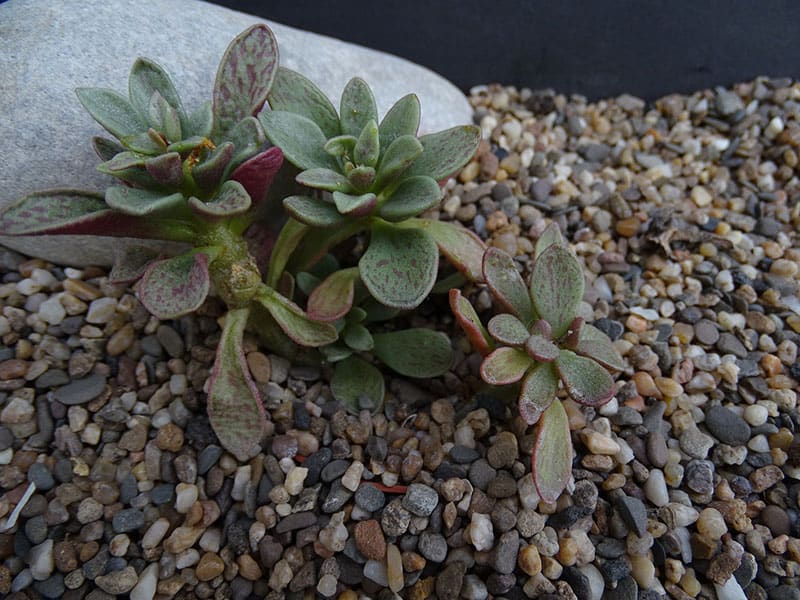
Simple but charming, humilis has soft green spoon-shaped leaves along its creeping stems. The dark purple flower lobes contrast nicely with the green tubes.
Adromischus inamoenus
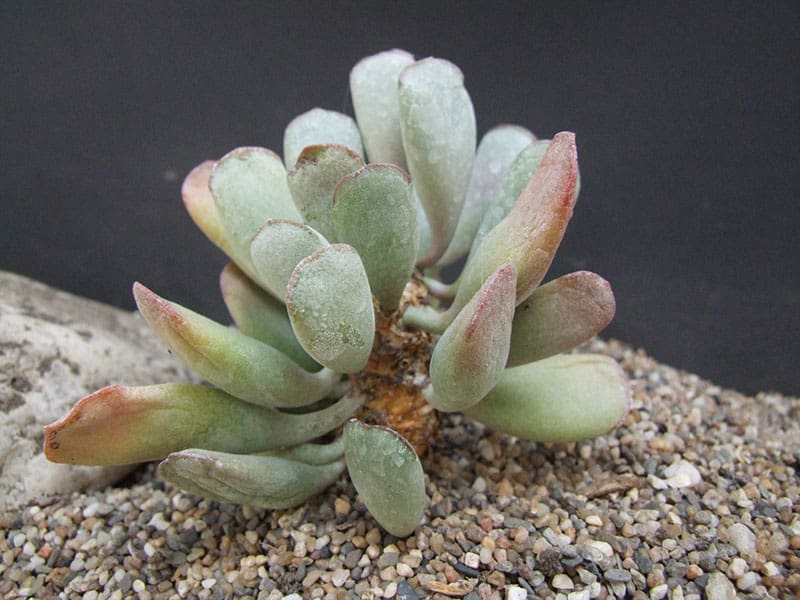
With its rounded, spiky-edged leaves and tall spikes of tiny grayish-green blooms, this variety has a wild, untamed beauty.
Adromischus leucophyllus
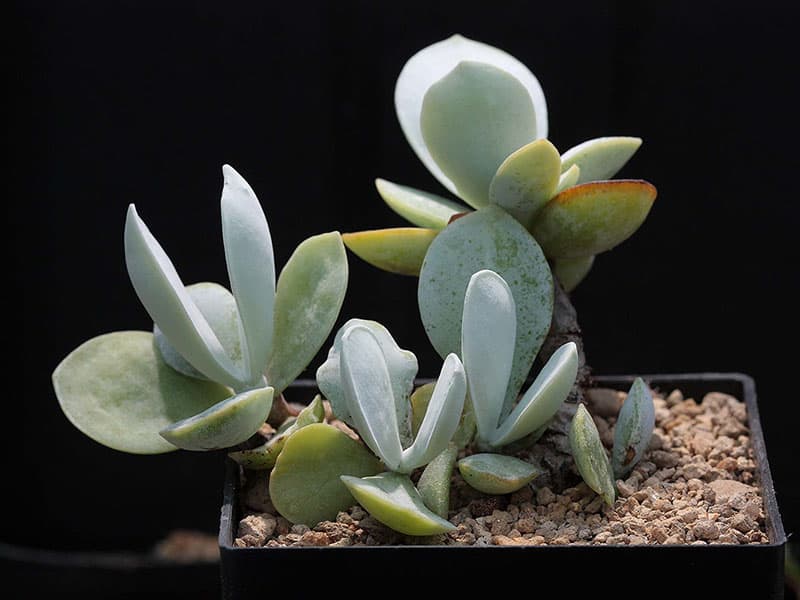
Wow, could this one be any whiter? The chubby, powdery-white leaves of leucophyllus start out red, then green before fading to bright white. Its pinkish-green flowers appear on 6-inch stems.
Adromischus liebenbergii
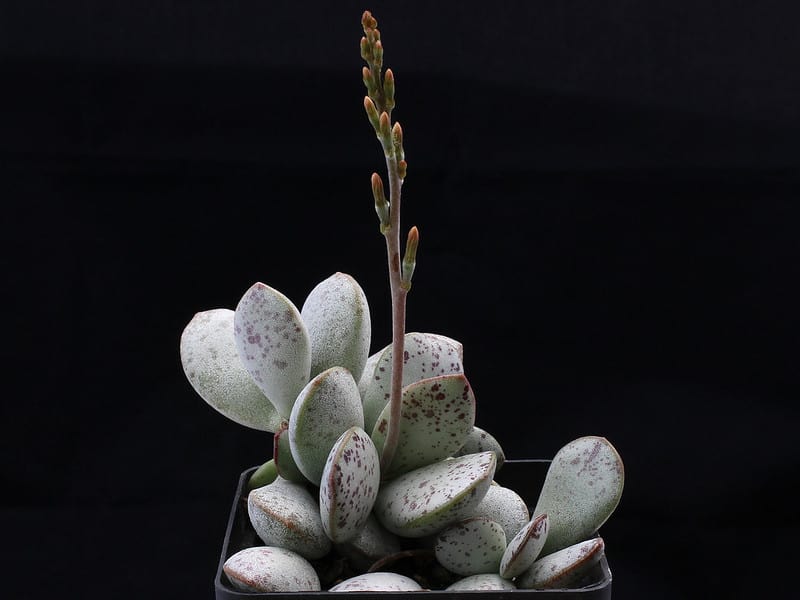
This petite beauty sends up slender 8-inch stems lined with pointed, pale green drop-shaped or diamond-like leaves. Tiny pale green and red flowers bloom in December-January.
Adromischus maculatus
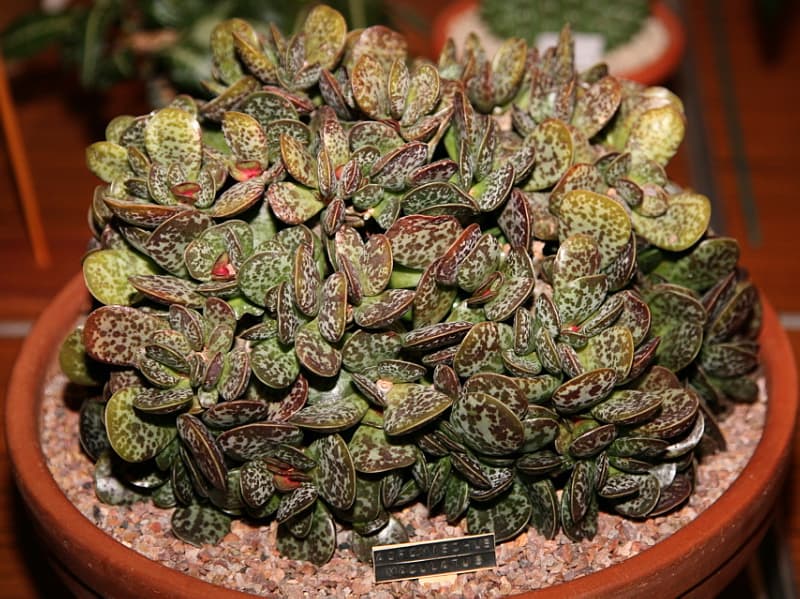
Doesn’t “chocolate-drop” just make your mouth water? The thick, wedge-shaped leaves are indeed marked with rich chocolate-brown splotches for a marbled effect. Tubular yellowish-green flowers complete the look.
Adromischus mammillaris
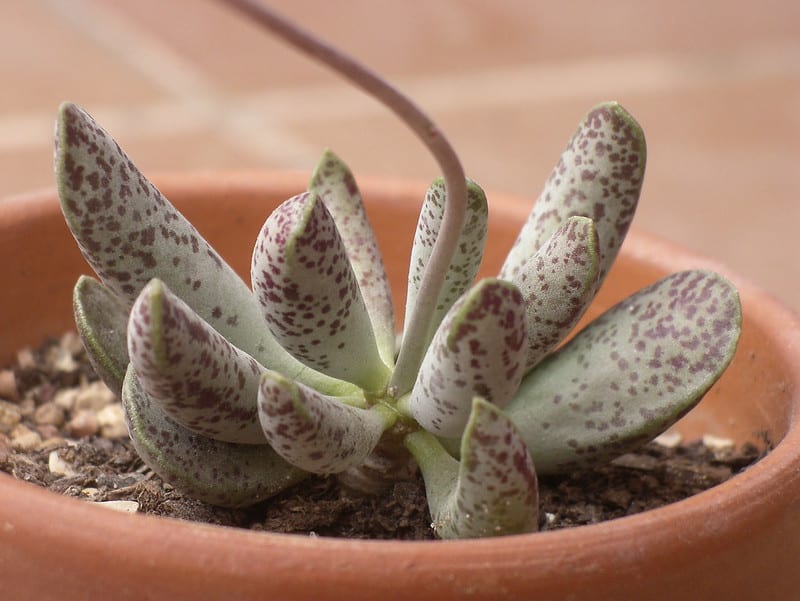
Adromischus mammillaris delights with its low-growing, trailing stems covered in plump green leaves dappled with deep red-purple spots towards the tips. Grayish-green flower spikes reach 8-14 inches tall.
Adromischus marianae
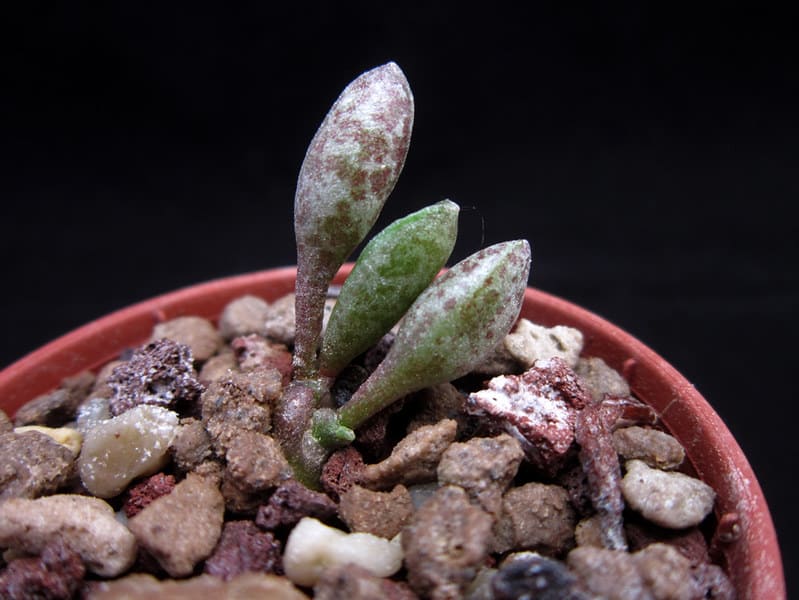
Get ready to be amazed by the incredible variations of this single species! Marianae comes in countless forms, from squat and bumpy to tall and slender. The thick, succulent leaves can be green, reddish-brown, spotty or plain. Some varieties look like shriveled raisins! Every single clone is distinct.
Adromischus marianae ‘Blosianus’
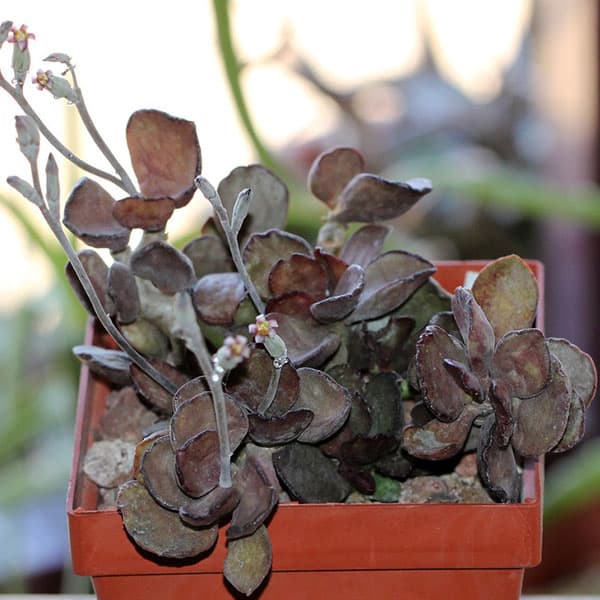
This marianae form has particularly thick, knobby stems clustered with rounded, green leaves covered in white bloom. The leaves take on a deep red blush in bright light.
Adromischus marianae f. alveolatus
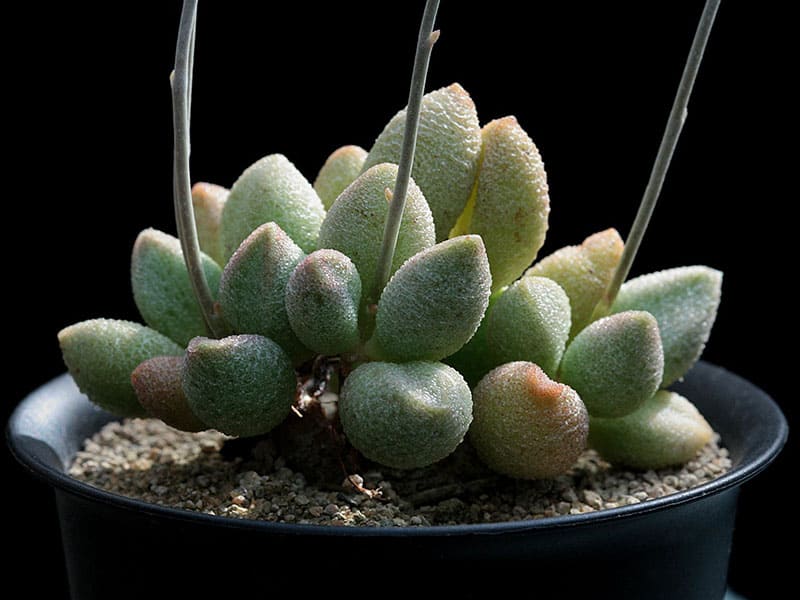
Alveolatus has incredibly rough, wart-covered leaves that sometimes form a maze-like pattern of irregular ridges across the surface. These low-growing plants develop the most bizarre textures!
Adromischus marianae f. herrei
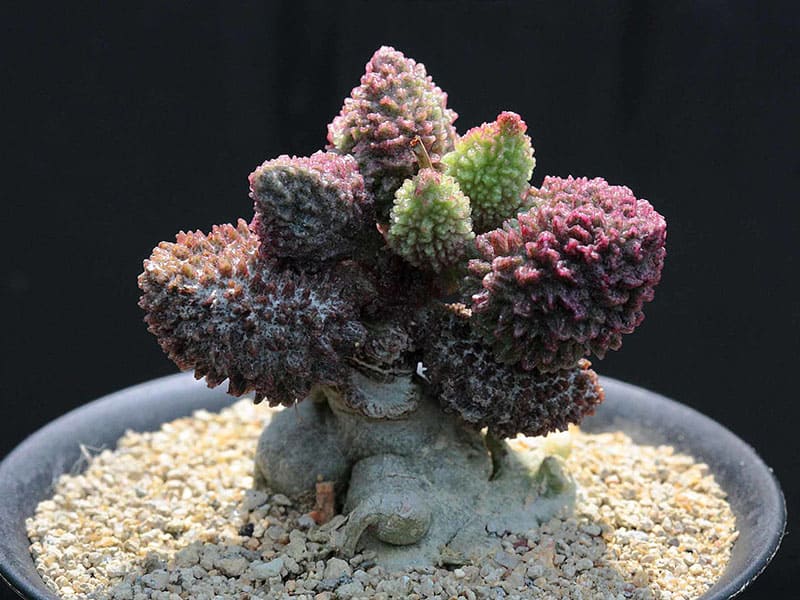
Like dried raisins for your succulent garden! The mini herrei variety stays extremely compact, with thin branches lined in rough, reddish-brown to purple leaves. The flowers are green blushed with pink-red.
Adromischus marianae ‘Little Spheroid’
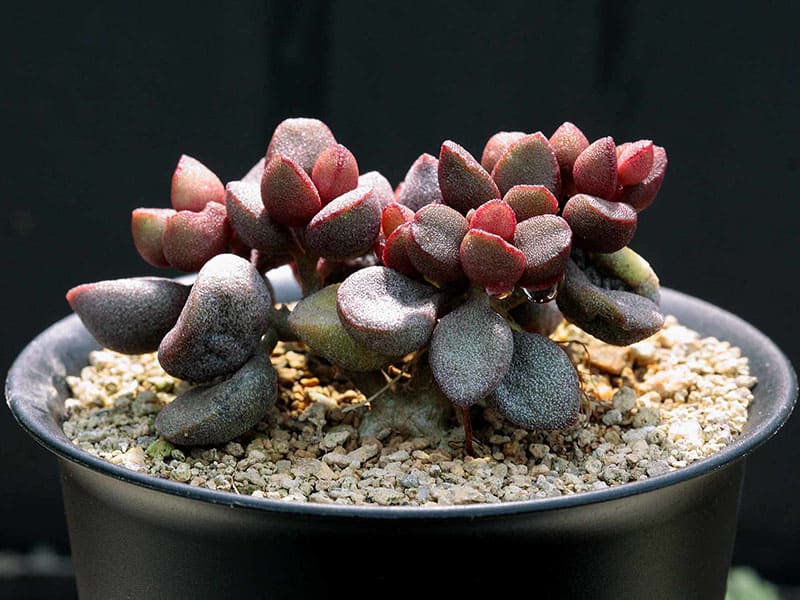
As its name suggests, this marianae form has the most perfectly round little leaves! The pale green orbs spiraling up the thick stems make it look like a plant covered in mini spheres.
Adromischus marianae var. antidorcatum
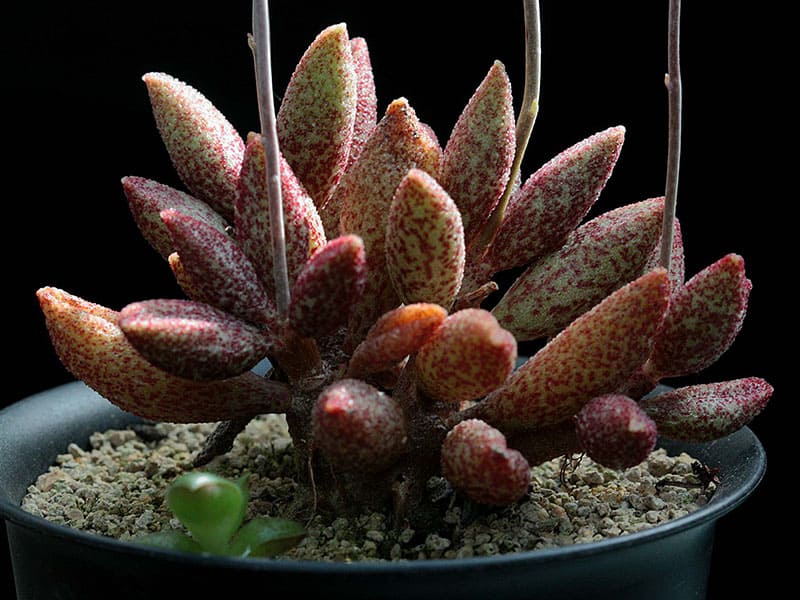
Part of the incredibly diverse marianae group, this variety stands out with its thick, swollen stem bases tapering to pencil-thin tips. The reddish-green leaves have raised warty bumps along the margins.
Adromischus marianae var. hallii
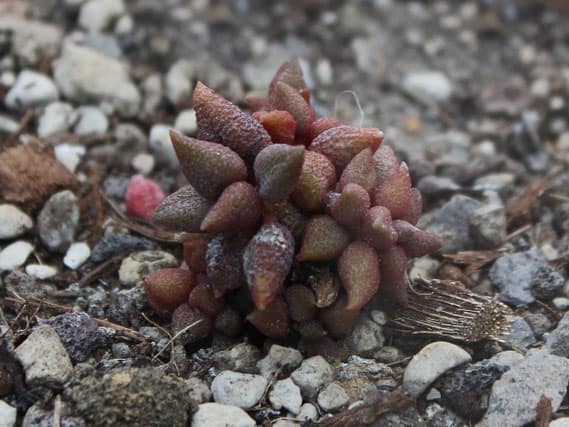
If you like ’em thick and chunky, hallii is the marianae for you! This rare border-region form has the broadest, thickest leaves of the bunch. The rounded, chalky gray-green leaves can be plain or attractively speckled with red spots.
Adromischus marianae var. immaculatus
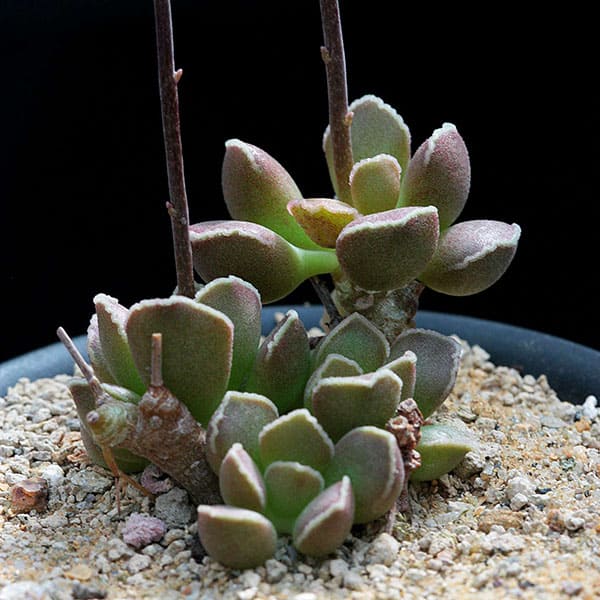
While most marianae sport spotted leaves, immaculatus is unspotted. Instead, the cylindrical to lance-shaped leaves are a solid color, from green to shades of brown, often with raised whitish margins.
Adromischus marianiae var. kubusanum
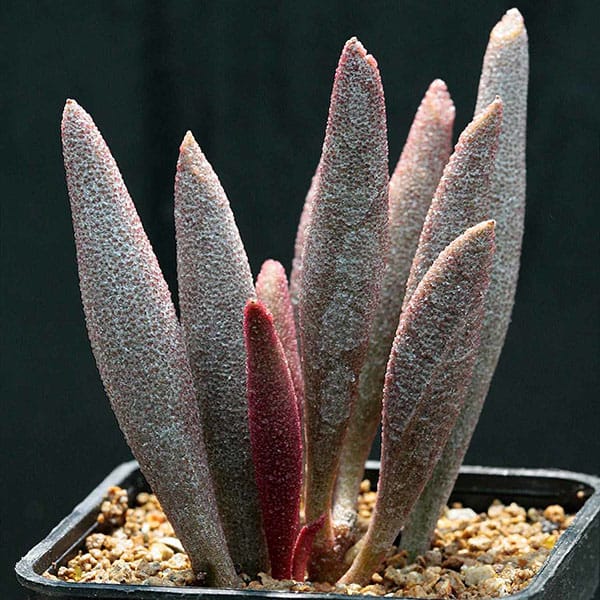
Kubusanum really shows off marianae’s shape-shifting skills! This compact, clustering form has tight rosettes of plump, rounded green leaves with a dusty white bloom.
The marianae varieties are so diverse, it’s like getting an entire universe of succulents in one species. I’m constantly amazed by their textures and forms!
Adromischus maximus
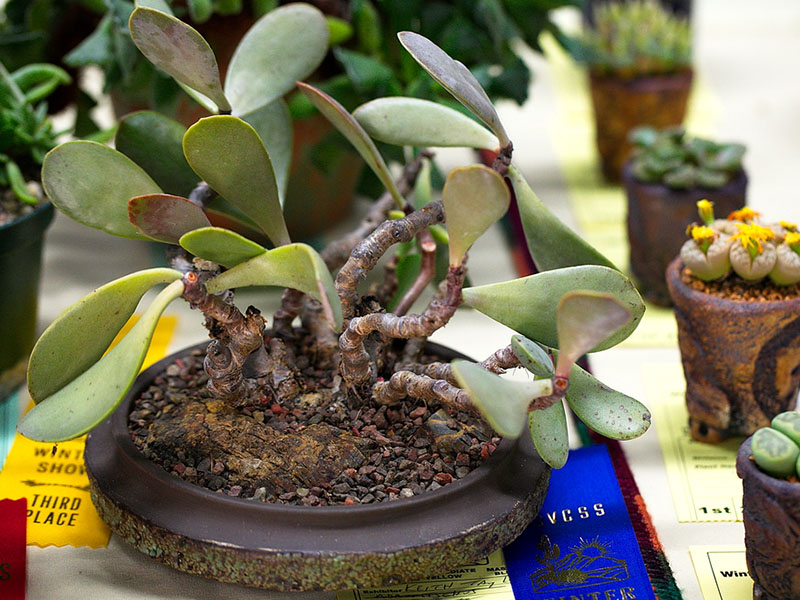
This is the big daddy of the Adromischus clan, with massive 5-inch long leaves on 1-inch thick stems! Maximus resembles a giant Cotyledon succulent with its tall flower spikes.
Adromischus montium-klinghardtii
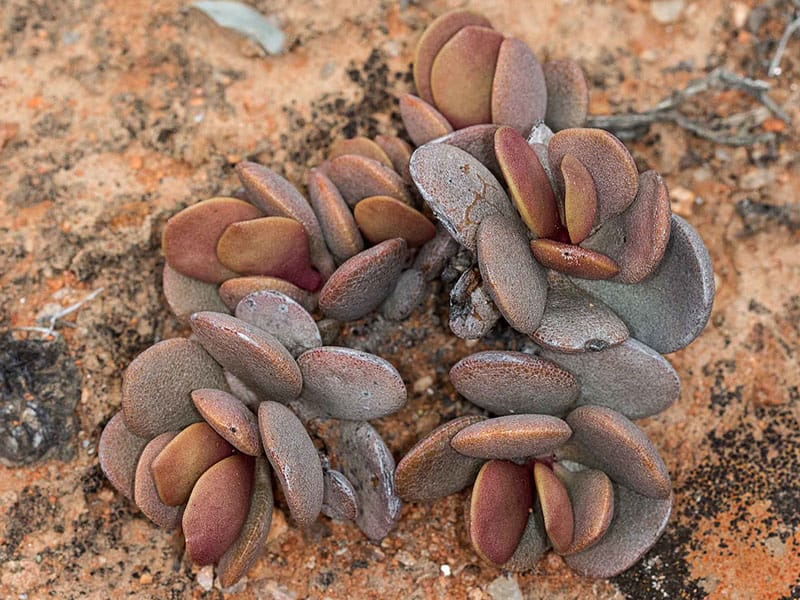
A compact, mounding variety with grayish-green to brown leaves covered in flaking white bloom. The oblong leaves can reach up to 3.5 inches long, with sprays of white or pink summer flowers.
Adromischus nanus
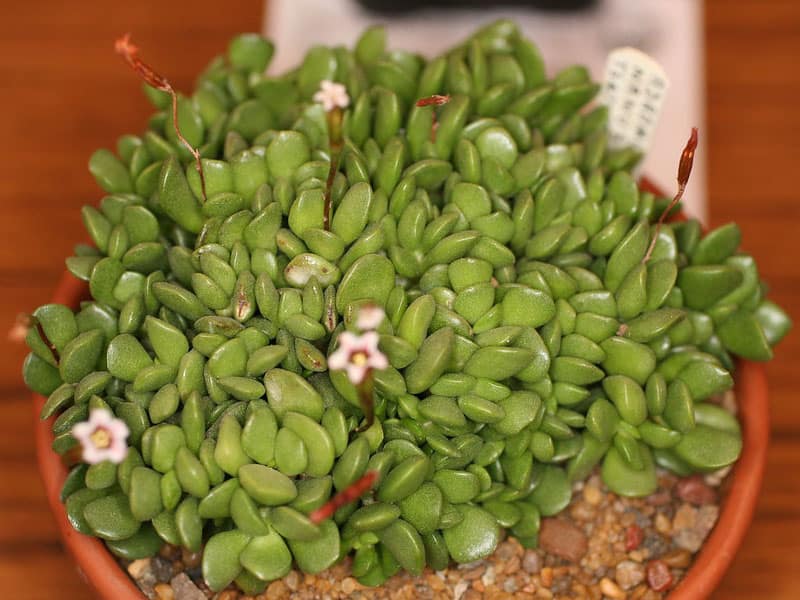
Don’t overlook this tiny gem! Nanus means “dwarf” in Latin, and this miniature variety lives up to its name. It forms tight little rosettes of chubby, triangular leaves colored in shades of green, often with darker tiger-stripe markings.
Adromischus roaneanus
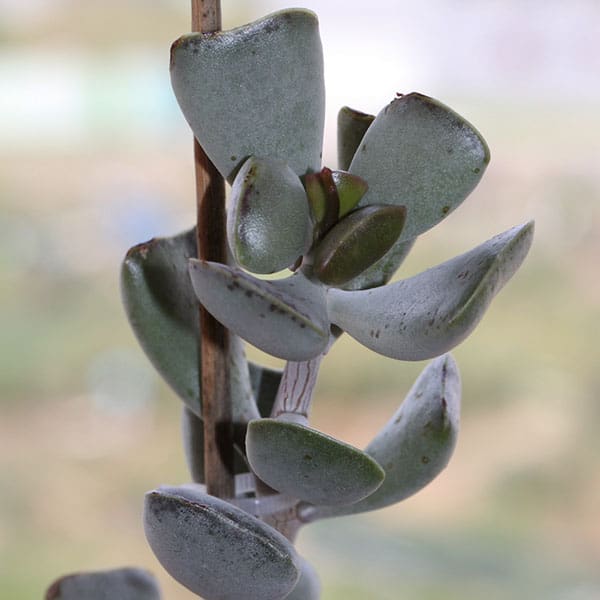
With its weirdly contorted stems and floppy, lancet-shaped leaves, roaneanus always looks a bit rumpled and disheveled – in the cutest way possible! The rubbery bluish-green leaves sometimes take on reddish blush tones.
Adromischus schuldtianus
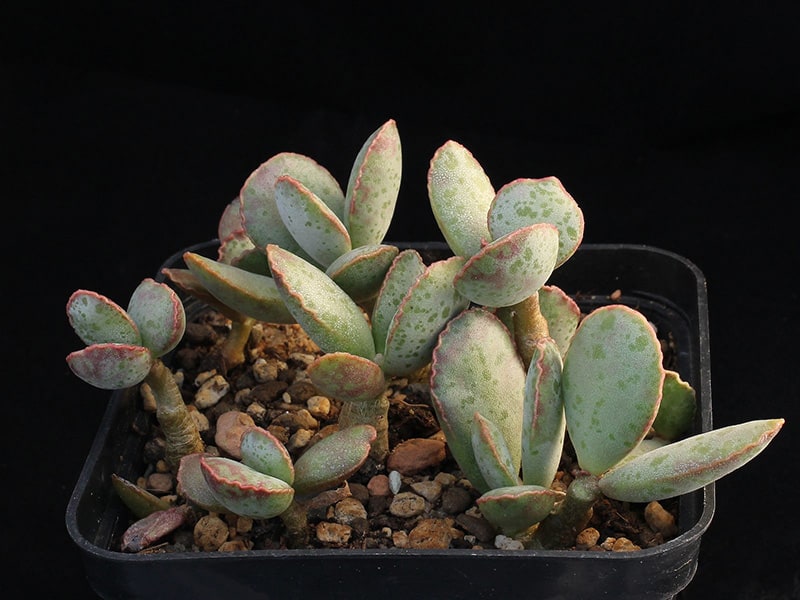
Like a furry little friend, schuldtianus is covered in a dusty white bloom that makes the green leaves look powdery soft. Over time, it develops a thick, branched caudex or bulbous stem base. The spotting ranges from maroon to translucent gray.
Adromischus schuldtianus ssp. juttae
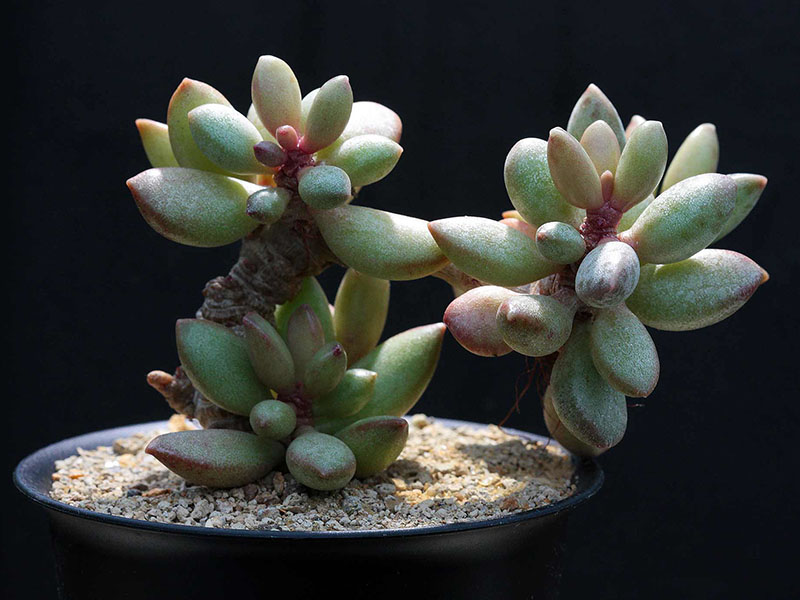
This lesser-known subspecies is a much-branched little shrublet, reaching up to 4 inches tall. While similar to the regular schuldtianus, juttae tends to produce longer stems lined with glossy green leaves.
The leaves have a slightly smoother, less powdery texture accented by scattered waxy dots instead of heavy bloom. Tiny white flowers appear, but let’s be honest – you’ll grow this petite variety mostly to admire its chunky, bonsai-like shape and fresh green coloring.
Juttae is quite rare in cultivation, known from just a few populations in habitat. So if you spot one of these dainty schuldtianus cousins, don’t hesitate to add it to your Adromischus collection! Every form is precious.
Adromischus sphenophyllus
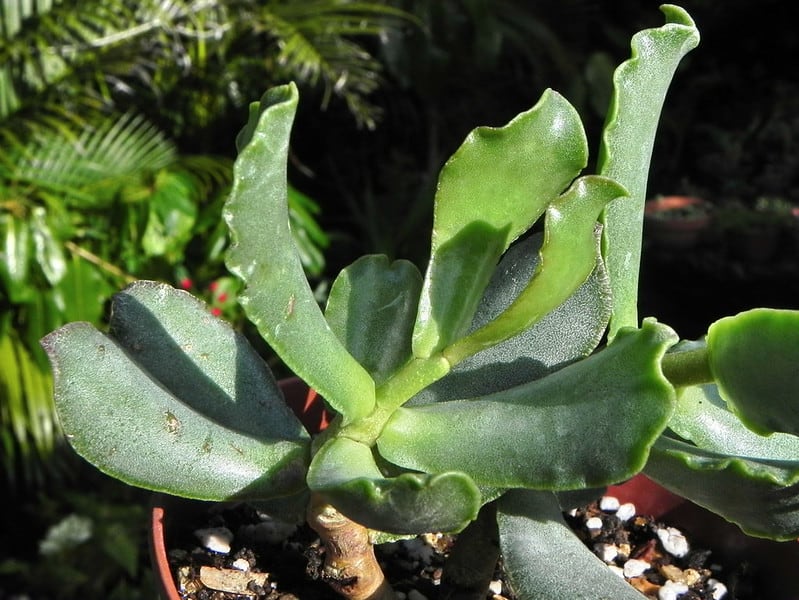
Sphenophyllus leaves start out rounded, then taper to a pointed tip, giving them a distinctly lanceolate (lance-shaped) profile. The grayish-green leaves often have reddish-purple blushes near the margins. Tiny red-tinged flowers appear in winter.
Adromischus subdistichus
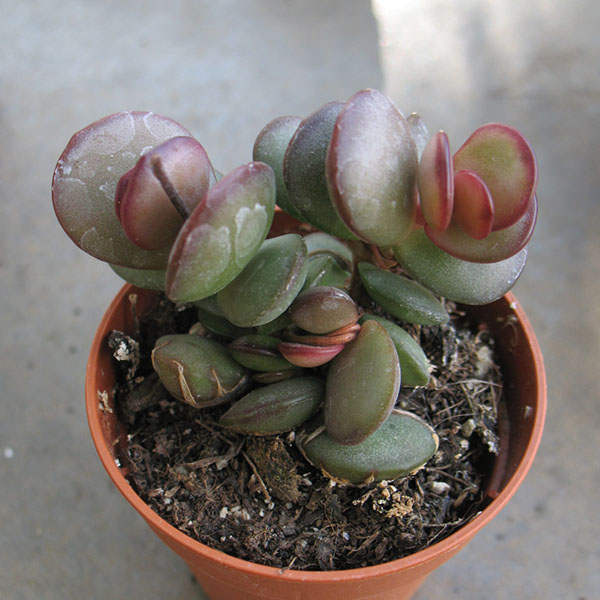
With its low-growing rosettes of thick, rounded burgundy-edged leaves, subdistichus looks like a miniature lettuce plant…that blooms! Dark reddish-purple stems carry the branched clusters of tiny flowers.
Adromischus subviridis
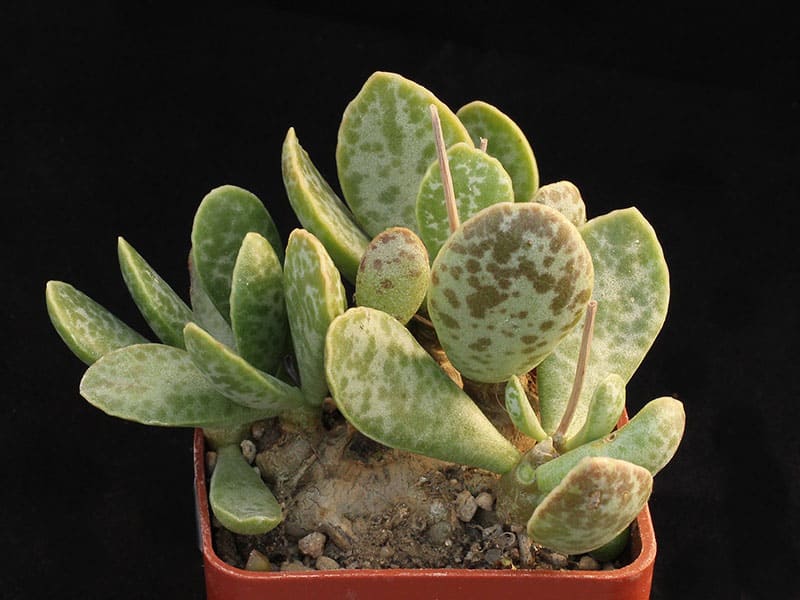
If you love ghostly white leaves, subviridis is your dream plant. The chalky oblong leaves have a heavy white bloom, accented by bold red spotting. Just be sure to keep it nicely watered to prevent shriveling.
Adromischus triflorus
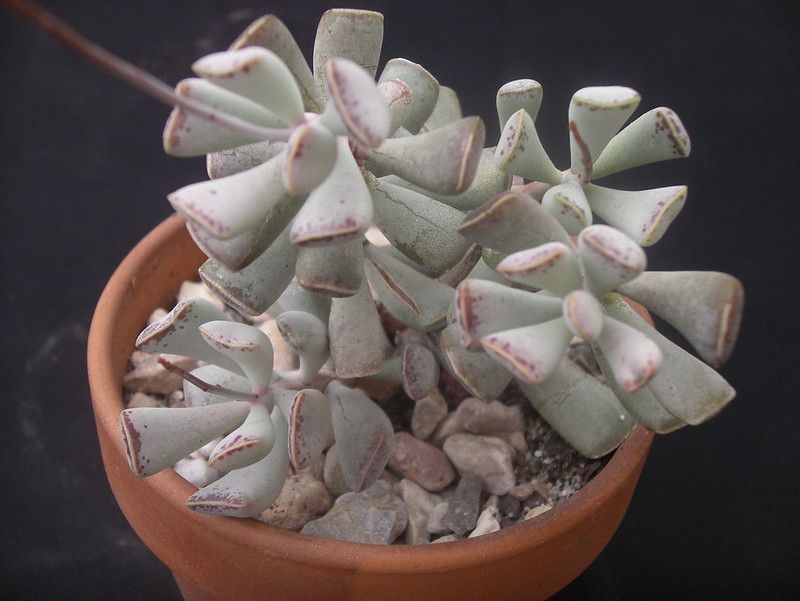
Triflorus means “three-flowered”, but don’t be fooled – this variety produces many more than three dainty blooms! What really shines are the shapely gray-green to reddish leaves sometimes speckled with darker spots.
Adromischus trigynus (Calico Hearts)
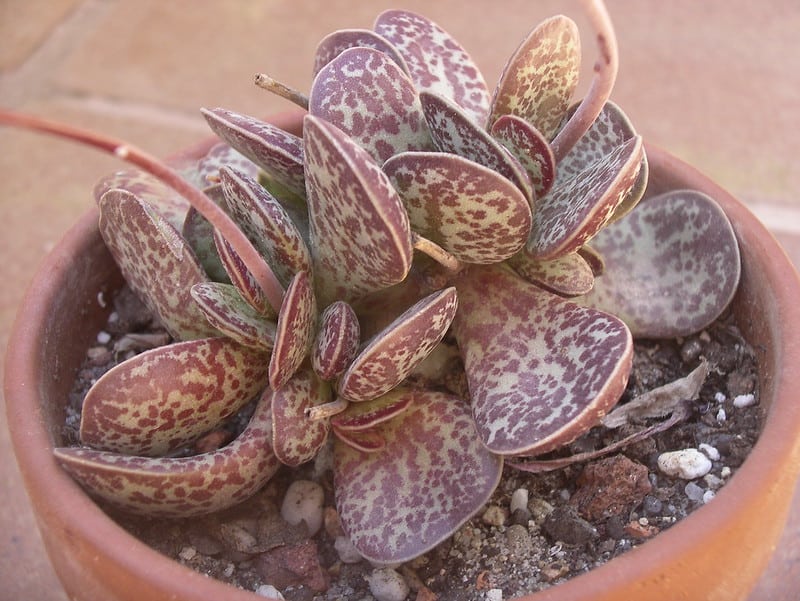
Could these chubby, pansy-faced leaves be any cuter? The rounded, mottled gray-green and maroon leaves of Calico Hearts form ultra-compact rosettes up to 5 inches wide. Slender reddish stems carry the small pinkish-white flowers in spring.
Adromischus umbraticola

With its long, spear-shaped grayish leaves sometimes dappled with dark spots, umbraticola cuts a stately silhouette. The pale green leaves with reddish-tinged margins spiral up thick, corky stems that become nicely branched over time.
Adromischus umbraticola ssp ramosus

True to its name, this subspecies is all about the branches! Ramosus develops a dense, shrubby form as its thick, corky stems divide again and again. The typical spear-shaped pale green leaves may be plain or speckled. But the real show is the intricate, sculptural structure created by the network of knobby, intertwined branches.
As it matures, ramosus takes on the appearance of a miniature succulent bonsai. The olive-green leaves often blush reddish in bright light, providing lovely contrast against the stems. For collectors who appreciate full, robust growth habits, this highly-branched umbraticola is a captivating choice.
Caring for Adromischus Species
Light
Adromischus plants crave bright sunlight to truly showcase their vibrant colors. If you’re growing them indoors, place them in a very sunny spot, like a window ledge that gets plenty of sunlight or the top shelf of a greenhouse. Their compact size makes it easy to maintain a collection even in small spaces.
Water
During the summer months, you’ll need to water your Adromischus plants about every 10 to 15 days. In the winter, however, they only require watering once a month at most. Always make sure the top layer of soil dries out completely before watering again.
Soil
Most Adromischus species thrive in well-draining, gritty soil or a store-bought succulent mix. You can add a small amount of coarse sand or perlite to improve drainage.
Climate
Adromischus plants can tolerate cool, frost-free conditions during the winter as long as you keep them dry. It’s best to avoid getting water on the leaves during this time. They can withstand temperatures as low as 19°F (-7°C) without issue.
Fertilizer
To keep your Adromischus plants healthy and vibrant, feed them with a cactus and succulent fertilizer every 2 to 3 weeks.
Propagation
Adromischus plants can be easily propagated from their leaves, allowing you to expand your collection or share with friends. Here’s a step-by-step guide to propagating these fascinating succulents:
Step 1: Choose a healthy leaf
Select a plump, healthy leaf from your Adromischus plant. Some species readily shed their leaves, making it easy to find viable candidates. For those that don’t, you’ll need to gently twist or cut off a leaf with a sharp, clean knife or scissors.
Step 2: Allow the leaf to callus over
Once you’ve removed the leaf, set it aside on a dry surface and allow the end to callus over for a few days. This helps prevent rotting when you plant it.
Step 3: Prepare a well-draining soil mix
Fill a small pot or tray with a well-draining succulent or cactus soil mix. You can also create your own by combining potting soil with coarse sand or perlite for added drainage.
Step 4: Place the leaf on the soil
Lay the calloused end of the leaf on the soil surface, pressing it down gently so that it makes contact with the soil. You can also nestle the leaf partially into the soil, leaving the top exposed.
Step 5: Water sparingly
Mist the soil lightly with a spray bottle to settle the leaf in place. Be careful not to overwater, as this can lead to rotting.
Step 6: Provide bright, indirect light
Place your propagation tray or pot in a spot that receives bright, indirect sunlight. Adromischus propagations do best with ample light but without the intensity of direct sunlight.
Step 7: Watch for new growth
Within a few weeks, you should see tiny roots and a new plant sprouting from the base of the leaf. Once the new plant is established, you can transplant it into its own pot.
With patience and care, each leaf can potentially grow into a new Adromischus plant, allowing you to expand your collection or share these fascinating succulents with others.
